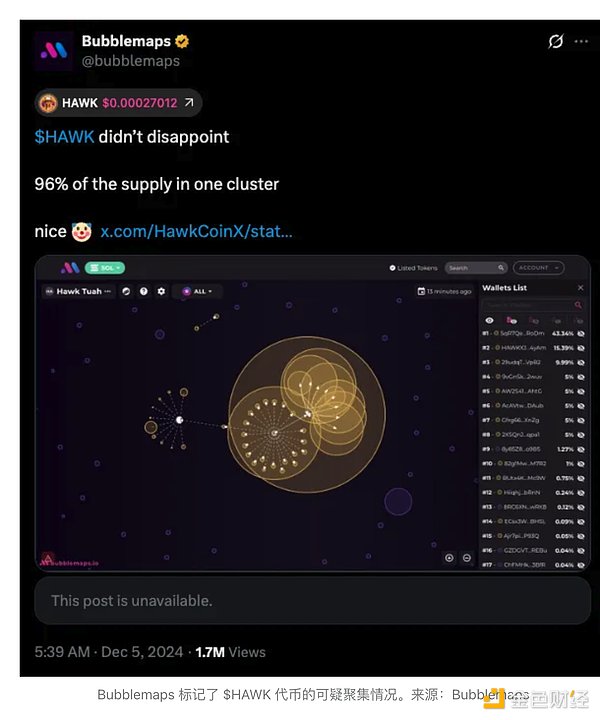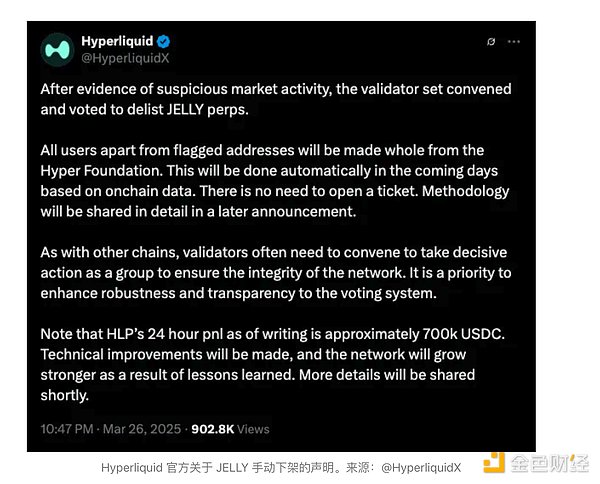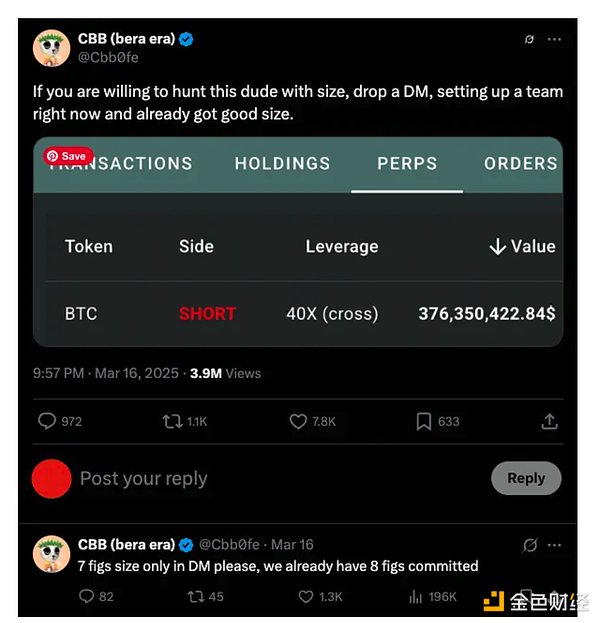Author: Chi Anh, Ryan Yoon Source: Tiger Research Translation: Shan Ouba, Golden Finance
Abstract
The transparency of blockchains allows communities to expose misconduct and redistribute power, but it also brings new vulnerabilities. Visibility is now both an advantage and a disadvantage for Web3 projects, opening the door to strategic attacks and group-driven volatility.
Although transparency amplifies systemic risks—including problems such as the exposure of insider behavior and the exploitation of protocols—avoiding transparency in order to avoid risks would violate the fundamental concept of Web3: open verification and decentralized trust.
The long-term success of Web3 will not be built on hidden behavior, but on risk-resistant systems that can survive and grow under continuous public supervision.
1. New risks of transparency: from monitoring tools to means of attack
The transparency of blockchain has become one of the core values of the Web3 industry. Unlike centralized databases where a single entity controls data access, blockchain runs on a transparent and immutable ledger that can be verified by all participants in real time. Transparency is the cornerstone of the Web3 architecture.
This transparency allows users to monitor the behavior of the projects they are concerned about in real time. They can track the wallet activities of founders, investors, and large users, and identify suspicious token transfers within minutes. In the Web2 world, internal transactions are often hidden behind private bank accounts, and ordinary people have no way of knowing; the extreme transparency of Web3 makes all transactions instant exposure. Compared with the information disclosure in traditional finance, which takes months, this real-time nature is a disruptive innovation.
But this "innovation" also brings about a structural paradox. Transparency, which should enhance responsibility and supervision, is increasingly being used to attack project parties and large holders, even if they have no evidence of any wrongdoing.
This report will explore the pros and cons of blockchain transparency and raise a key question: Should Web3 insist on absolute transparency at all costs?
2. The double-edged sword effect of transparency
2.1 The positive side: exposing internal behavior and restoring market fairness

Between 2024 and 2025, a series of on-chain monitoring of insiders revealed that team wallets, KOLs, and early investors of multiple projects were suspected of selling tokens. Thanks to the transparency of the blockchain, these behaviors were quickly exposed, triggering a strong backlash from the community.

For example, in the HAWK Meme coin incident, more than 96% of the token supply was found to be concentrated in the hands of the project party and its affiliates. Once the information was exposed, the market reaction was extremely intense: the market value of the currency plummeted from a peak of US$500 million to less than US$60 million, triggering regulatory investigations and seriously damaging its credibility.
The transparency of the blockchain enables community members to act as real-time "supervisors". Whether a project is led by a KOL or run by an anonymous team, if it fails to act in a transparent manner, it will often face accusations of market manipulation, even if its behavior is technically legal.
Although transaction data is publicly visible to everyone, interpreting the meaning behind it is not simple. To accurately understand the intention and background of each transaction requires specific expertise, which is difficult for ordinary users to fully judge. However, with the continuous advancement of on-chain analysis tools, this cognitive gap is gradually narrowing. Users are now increasingly able to extract useful information from complex transaction flows and optimize their decisions accordingly.
2.2 The negative side: when transparency backfires on the platform itself
Today, more and more advanced on-chain analysis tools make it easier for participants to access and interpret blockchain data. But this also brings new risks. As monitoring capabilities improve, transparency itself is also weaponized. Some projects with weak governance structures and highly concentrated token distribution are more vulnerable to manipulation and coordinated attacks.

On March 26, 2025, Hyperliquid encountered a new type of protocol-level risk, which was caused by the transparency it advocated. According to Arkham's analysis, the specific process of this incident is as follows:
The attacker analyzed the liquidation threshold and HLP vault size announced by Hyperliquid and accurately calculated a liquidation point;
Three wallets were used to open a short order of $4.1 million and two long orders of $2.15 million and $1.9 million respectively, in order to artificially push up the price of JELLY tokens;
As the price of JELLY rose, the first short order was liquidated and the loss was borne by the HLP vault;
External traders were influenced by the rumors of OKX's listing and the expectation of "short squeeze", and followed up with long orders, further exacerbating price fluctuations;
left;">Ultimately, Hyperliquid was forced to forcibly delist JELLY and liquidate all positions at $0.0095 to curb systemic risk.
Hyperliquid’s architecture—including vault exposure, margin levels, liquidation thresholds, and public display of positions—inadvertently provided attackers with a means to exert precise pressure. In this case, transparencydid not prevent manipulation, but instead provided tools for a coordinated financial attack.

Ironically, the transparency advocated by Hyperliquid ultimately not only led to direct financial losses for the platform, but also triggered broader concerns about its governance capabilities and the system's ability to withstand pressure. In order to prevent further systemic damage, the team had to delist JELLY - a move that was necessary but contrary to the original intention of decentralization.
Similar risks may also occur in other projects. Even if the technical design itself is impeccable, as long as the protocol is open and transparent, it may still be subject to unexpected attacks. Without supporting defense mechanisms and clear response strategies, transparency, which was originally intended to enhance trust, may become the root cause of systemic instability.
In this context, transparency is no longer just an advantage, it has also become a strategic vulnerability.
2.3. Neutral side: When transparency becomes a tool of "crowd strategy"
The results of transparency cannot be simply divided into positive or negative. In some situations, transparency becomes a tool, and its role presents a blurred line between promoting market fairness and promoting individual self-interest.

This emerging trend is particularly evident on Hyperliquid, where some investors have begun to actively "snipe" large traders based solely on public information about their positions. A typical case involves a trader named CBB, who publicly called for a coordinated liquidation of a whale and claimed that eight-digit funds were ready. It should be noted that the locked-in traders did not violate the provisions of the agreement or engage in any improper behavior, but simply because of the large size of their positions, they inevitably became targets.
In addition, this behavior also reflects a psychological pattern in the Web3 environment, which is a modern version of the "David vs. Goliath" mentality. In the traditional narrative, David is portrayed as a righteous weakling, while Goliath, although just a strong soldier fighting the same battle, is regarded as an opponent because of his strength. The same is true in Web3, where large holders often become symbolic targets because of their "visible strength", regardless of whether their behavior is justified. Visibility amplifies the public's subjective perception, and this perception - rather than objective facts - is increasingly influencing group behavior.
Therefore, some innocent investors may suffer reputational damage or financial losses simply because of their "exposure". This fear of "the public is targeting me" may inhibit large funds from entering the Web3 ecosystem, ultimately limiting the growth space for new projects. At the same time, the organized behavior of the masses may also concentrate the right to speak in the hands of a few influential groups - ironically, this breeds new forms of centralization in decentralized systems.
3. New reality: Should projects be more transparent?
Transparency in Web3 is a double-edged sword. On the one hand, it enables the community to expose internal misconduct and restructure the market power structure through collective action; on the other hand, it also exposes projects to unexpected attacks, including strategic market manipulation. Although the original intention of transparency is to build trust, it can also become a catalyst for systemic instability.
However, despite these risks, giving up transparency is neither realistic nor desirable for most Web3 projects. Transparency is the cornerstone of the Web3 spirit: it makes open verification possible, reduces information asymmetry, and shifts trust from centralized intermediaries to decentralized systems. If transparency is abandoned, the core differences between Web3 and traditional financial and technological structures will gradually disappear.
Therefore, instead of retreating, it is better to adapt to transparency and build strategies to coexist. This includes embedding stress resistance mechanisms in protocol design, establishing a clear crisis management framework, and proactively guiding users' understanding and communication of projects.
For example, some projects have established DAO-based emergency response mechanisms to ensure that emergency interventions are subject to transparent, community-approved governance; others regularly launch bug bounty programs to detect potential problems before they are exploited.
Transparency in Web3 cannot be reduced, it is a structural necessity. Project parties must recognize that transparency will continue to amplify opportunities and risks. Those who can really go further are not those projects that "hide better", but those systems that can still operate robustly in a fully exposed state.
 Kikyo
Kikyo
 Kikyo
Kikyo Weatherly
Weatherly Catherine
Catherine Weatherly
Weatherly Joy
Joy Catherine
Catherine Kikyo
Kikyo Joy
Joy Catherine
Catherine Anais
Anais